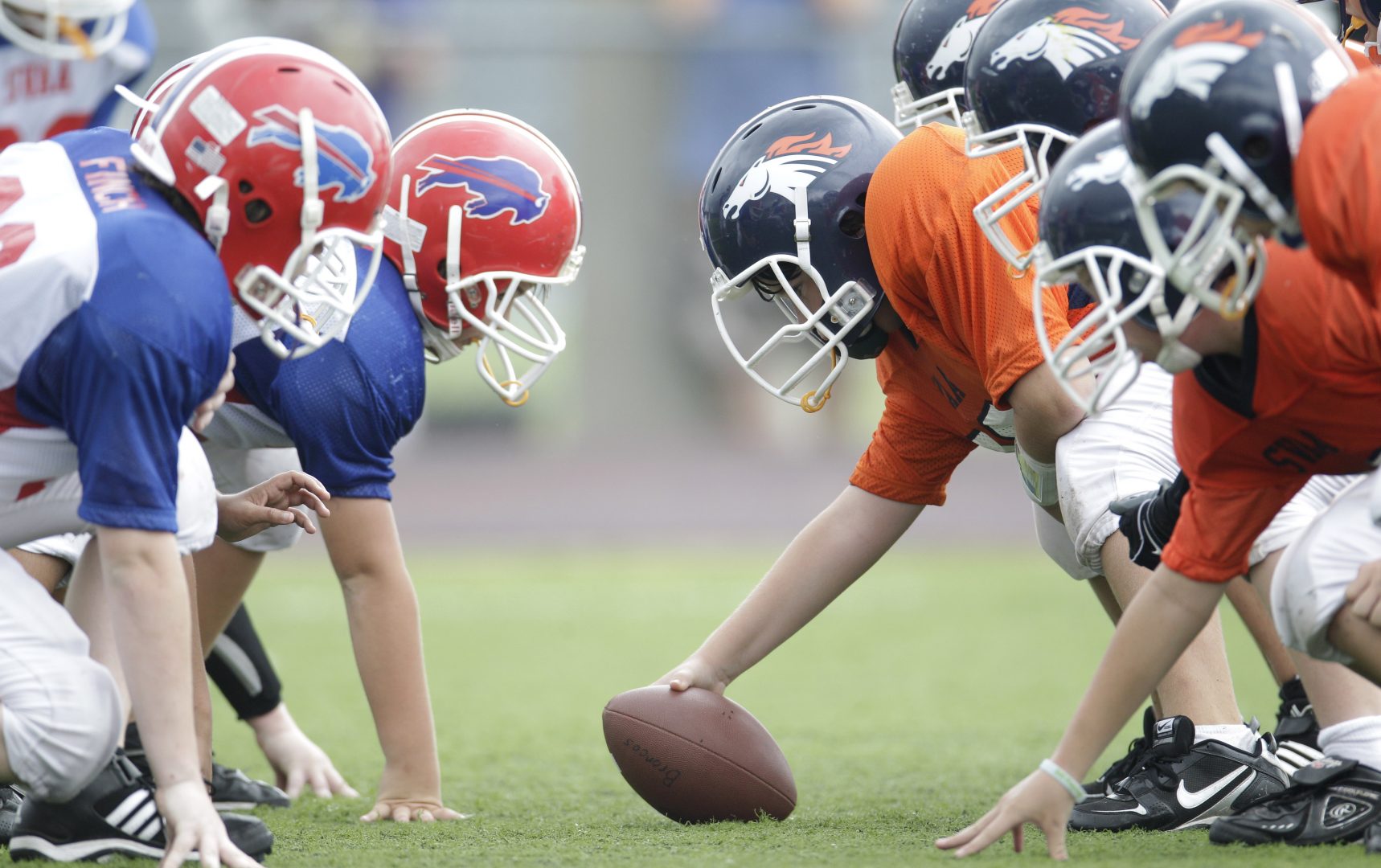
In this photo made Saturday, Sept. 25, 2010, players line up during a 6th grade youth football game in Richardson, Texas. Some of the boys play with a new type of football helmet designed to reduce the risk of concussions. (AP Photo/LM Otero)

In this photo made Saturday, Sept. 25, 2010, players line up during a 6th grade youth football game in Richardson, Texas. Some of the boys play with a new type of football helmet designed to reduce the risk of concussions. (AP Photo/LM Otero)

In this photo made Saturday, Sept. 25, 2010, players line up during a 6th grade youth football game in Richardson, Texas. Some of the boys play with a new type of football helmet designed to reduce the risk of concussions. (AP Photo/LM Otero)
(Harrisburg) — The state-funded BrainSTEPS program is raising awareness about the risks of concussions among children and teens.
The group, which was created by the state Department of Health in 2007, helps young people to recover from traumatic brain injuries. It also trains teachers and coaches to identify symptoms and safely return students to school and sports. Traumatic brain injuries range from mild concussions that don’t require treatment to severe injuries like brain swelling and bleeding.
At a recent media event, coordinator Brenda Eagan-Johnson said about 4,000 children and teens are hospitalized with a brain injury each year in Pennsylvania.
Overall, about 22,000 young people suffer from a concussion each year in Pennsylvania, Eagan-Johnson said.
In 30 percent of those cases, the brain doesn’t heal adequately within a month, she said. That’s when a patient is referred to the BrainSTEPS program.
“Some students, not a lot, but some, do take several months to recover,” she said. “And according to the Centers for Disease Control, a very small number may have symptoms that last a lifetime.”
About half of the young people who come to the program suffer from sports-related head injuries. The other half were injured in falls, car accidents or other incidents.
The majority of those injuries are in people aged 14 through 17, Eagan-Johnson said, and the initiative focuses on helping students to heal before they return to schoolwork and sports.
Since the passage of the 2011 Safety in Youth Sports Act, the program also helps schools to comply with the law, training coaches and developing policies on when it’s safe for a student to return to sports.
Eagan-Johnson said concussions are under-reported. She urged parents to monitor warning signs like memory and attention problems and changes in mood and personality.
Returning to schoolwork and sports prior to proper healing can lead to worse problems down the road, she said.
The days of journalism’s one-way street of simply producing stories for the public have long been over. Now, it’s time to find better ways to interact with you and ensure we meet your high standards of what a credible media organization should be.